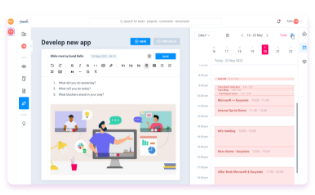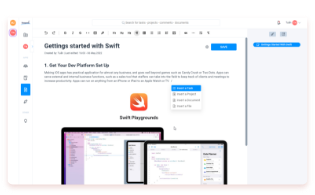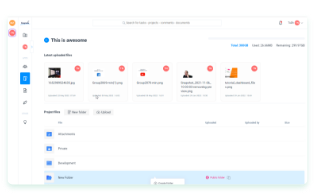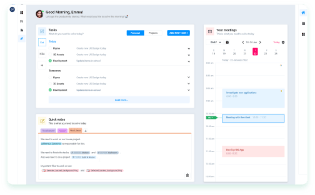You have come to that stage of your product roadmap and now it’s time to release the Beta. However, finding someone who will actually test it and bring valuable feedback can be challenging. We at Easynote have gone through our Beta launch process experimenting and want to share with you what we have learned.
1. Test the product yourself before you launch Beta
You want to make sure the product you’re releasing is the best it can be. This step might feel redundant to the perfectionists out there. Still, there are many products being launched that don’t fulfill the minimum requirements a functional product should.
Don’t be one of those brands. Of course, you are releasing the Beta as a final round of testing, but make sure it is as close to the final product as possible. A functional, working Beta, with little to no bugs, is what will attract testers and make them stay.
2. Make an attractive Beta landing page
Sure, you might have successfully reached people who will later convert in your Beta testers. Yet, if your landing page does not convince them, you are losing those who might later become paying customers.
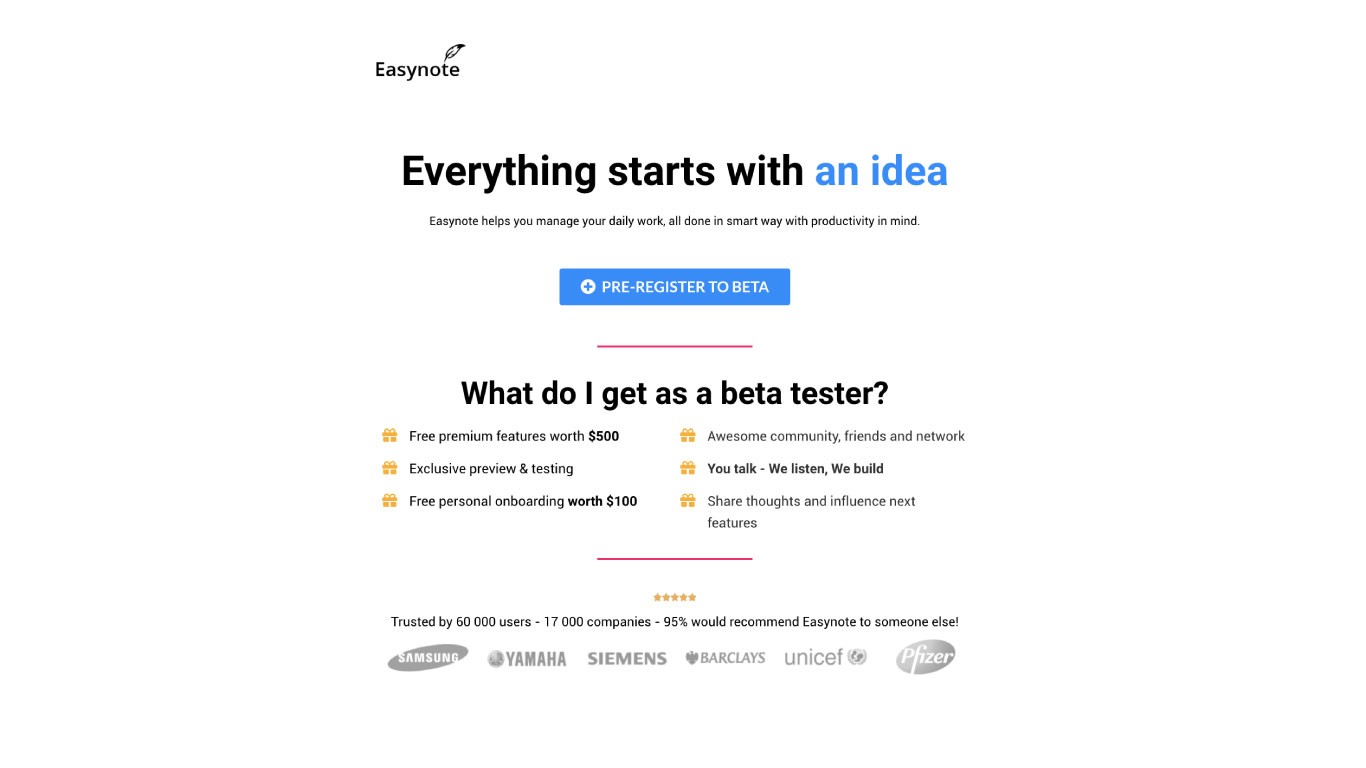
Create a landing page for pre-registration if your Beta is not ready to be launched just yet. This is the place where your future Beta testers will leave their email addresses. You can later use these to inform them when your Beta opens.
Make sure your landing page is as good as it can be. It doesn’t need to be fancy. Don’t overdo it either. You just need a simple web page with some text, a couple screenshots, an explanatory video, and a call to action.
3. Make your Beta launch exclusive
What we tried and what worked best for us was to make our Beta product exclusive. It is an old marketing trick used for creating a sense of prestige that inevitably drives demand. And that is exactly what you want.
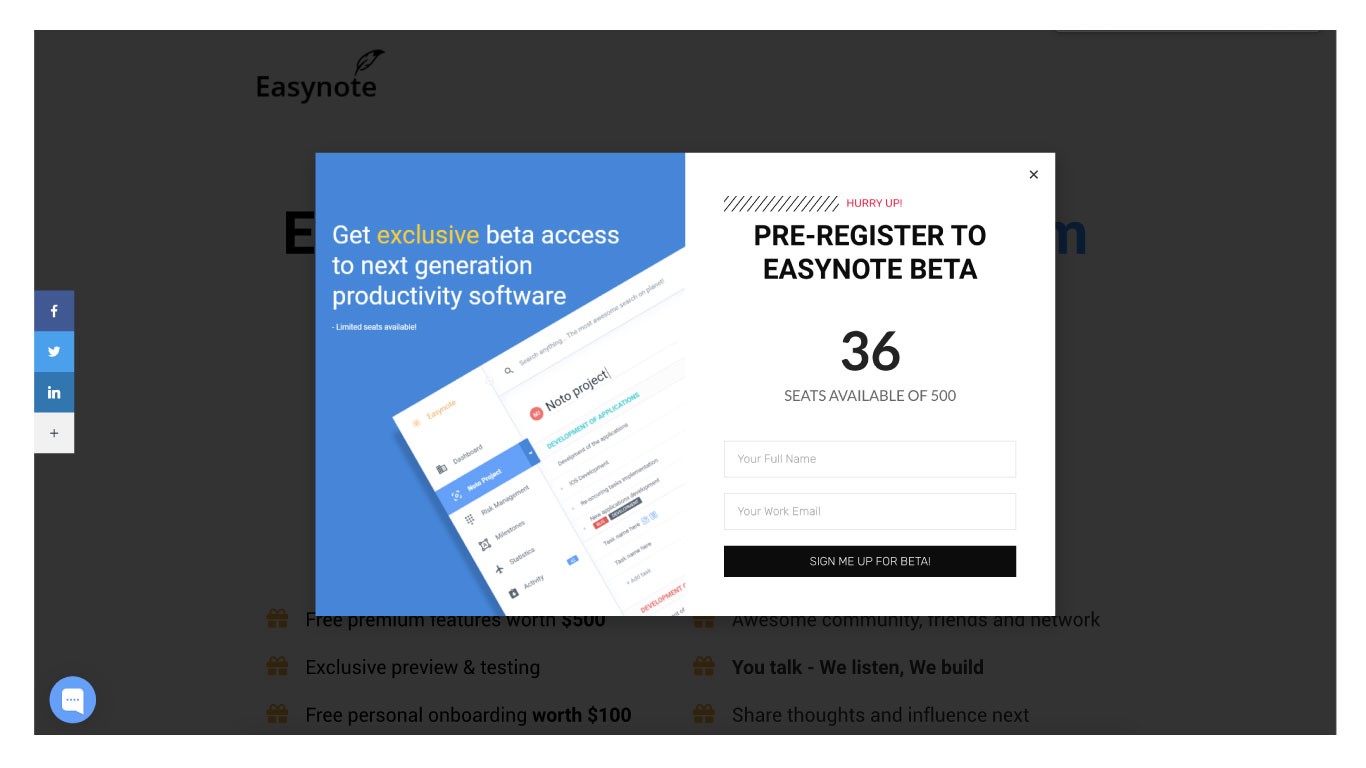
You can put a limit on the seats available and/or a time limit during which your Beta testers can pre-register or use the product. The more scarce your product is, the more value it will have. This might be one thing that eventually convinces people to try your product.
4. Don’t forget onboarding
You need it for two good reasons: without a proper explanation testers might not understand fully what your product has to offer and so won’t be able to test it properly; and second, they might learn things they didn’t know your product would offer and love it even more, thus staying for the final release and paying for it.
Make your onboarding interactive. We’ve done this using Userpilot, a code-free product experience software. Onboarding needs to get users interested and engaged, you don’t want your testers, and later paying customers, clicking out of it because they got annoyed.
5. Find people who will test your Beta
Finding testers for your Beta launch can be pretty time-consuming and frustrating, especially if you don’t know where to start. You will want to check out some free platforms that connect beta testers with software they would want to use. Betabound was particularly successful in our case.
Also, don’t forget social media. However, not every social network will be appropriate for what you have to offer. Research the market and find out where your target audience likes to spend their time. Here’s an in-depth guide on How to Find Beta Testers in 2021.
From our experience, LinkedIn is a big no-no! Sure, share it with your connections and people following your page, but don’t bother writing to people you don’t know or web scraping for their email addresses. They get filled with messages trying to sell them something on a daily basis and are not likely to check out what it is that you are trying to offer.
Facebook groups with people operating in our target market is what won the race for us. It was the channel that brought us the most testers, not counting the users of an old version of our app. For you, this might be Instagram, Twitter, Reddit, or Pinterest. Or some other thing. Do your research and act accordingly.
Tailor your message to the channel chosen AND the people you are trying to reach. Write personal messages to your prospects. If that’s not possible, personalize your messages as much as possible in order to avoid them getting ignored.
6. Give Beta testers something in return
Beta testers are people who are testing your product for free. Apart from some tech enthusiasts you might find out there, there are not many people who will spend their time testing your product for nothing in return.
Give value to your Beta testers and make sure they know it. Put it in a visible place of your landing page. A possibility to try new features no one on the market has? An improvement of existing substitutes? Maybe a deal they might use once your product is ready for sale? This will make testers want to help you out and will facilitate your first sales in the future.
7. Know where your testers are coming from
Don’t forget to set up Google Analytics (or some other tool) that will help you track your referrals. Do it even if it’s just a Beta launch phase.
You will need this information to know where most of your testers came from and which campaign was most successful. Other ones which brought the least amount of people to your website you can adapt to fit the channel/audience better.
Once the campaign has ended, you can use this data to finalize the process and make conclusions. It is particularly helpful for measuring KPIs you might have set for your campaign to measure its success.
8. Communicate important information to your Beta testers
You’d probably want to talk to your testers via email. But don’t bother them with useless stuff. Inform them once you have a final date for your Beta launch. Send them a reminder on the day of the launch. Maybe follow up with those who did not seem to act on your previous emails. That should be enough at this stage.
Make sure you keep them informed of all the changes in regards to the product they have subscribed to test out, be it the final release, new features, and improvements, or changes in pricing. This is the type of information they will be interested in and you would want to communicate to them.
9. Collect feedback from Beta testers
Beta launch is a process primarily done for the purpose of collecting feedback. You will want to know what the testers are doing within the app. Make sure they can report bugs or suggest ideas easily as feedback makes your product better.

Some in-app integrations can save you a lot of time and trouble, although we recommend having at least a customer support email as well. We used Upvoty to collect direct tester feedback and recordings of user behaviour within the app. We conducted surveys with Hotjar, whose success story of how they got 60 000 beta signups in 6 months was particularly inspiring.
10. Have a Beta launch coordination system in place
Throughout all of the phases of your Beta release, you will most likely have to work with different teammates. One way to optimize your work is by using project management software and collaboration tools such as our Easynote.
We made it intuitive and easy to use, having in mind people who have never used similar tools before. It is customizable to your needs and will work well for both big and small teams, complex or simple projects.
It allows you to work in a smart table view with unlimited widgets (people, progress, status, urgency, text). For those who like to visualize their workflow, there is a Kanban board. There are both popup and email notifications for any changes made across all of your projects.
In case you are used to doing things in Excel or other similar online software, Easynote allows you to import any task you might have on other apps. Think of this as an improved way of managing your workflow. You can track any kind of changes made, across all projects, done by any user.
Such ways of collaborating have become especially important after the impact Covid-19 has had on the world and businesses. We’ve had to learn how to boost productivity working remotely and this meant changing the ways we’ve been doing things in the past.
Keep in mind
Beta launch is never easy. It will be a time-consuming process and you will have to learn along the way. And that is what will make you grow, as a person and as a company. Oftentimes, it is all you need to succeed.


